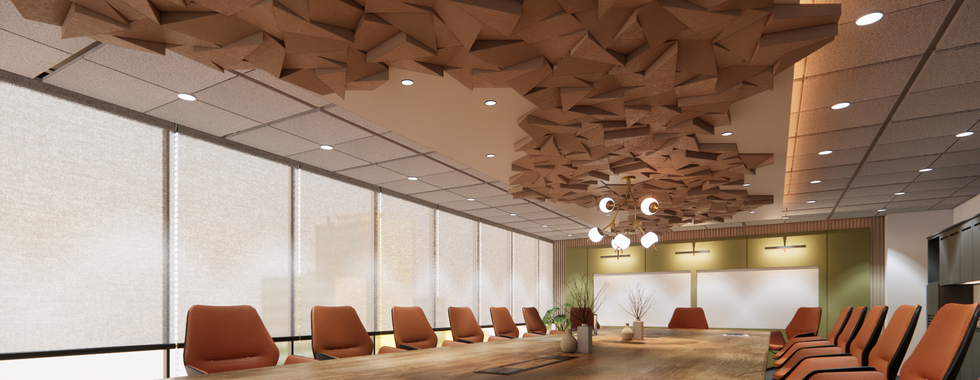The Impact of Acoustics Optimisation in the Workplace
- charisse35
- Mar 30, 2022
- 2 min read
Updated: May 28, 2024
According to Udemy Workplace Distraction report from 2018, 75% of the employees are more productive and 57% of employees have increased work motivation when auditory distractions are reduced or totally eliminated.
Acoustics in Interior refers to the science of controlling a room’s surface based on sound absorbing and reflecting materials. In architecture, building acoustics is the science and engineering of achieve good sound control within a building and is a branch of acoustical engineering.

The acoustics inside office buildings impact employees’ performance, attendance, and retention. Without the appropriate room acoustic design inside buildings, noise can seriously harm human health and disrupt the work environment.
Optimising your acoustics in design helps you ensure that your overall workplace is on a path towards better performance. With this design approach, you can create a space for your employees where absorption, isolation, and background sound performance work together without disregarding the whole aesthetic of a space.
The acoustics design and engineering is a complex study, especially when you have to consider and comply with the various legislating bodies that had set standards and requirements for acoustics performances, and selecting appropriate materials. In order to design a space with a better acoustic solution, we must first identify its purpose, what type of activities will be done in the space given, and also the Audio Visual systems to be installed; through this, we can initially anticipate the average noise level in the space given.
According to Rockfon™, there are some considerations we need to verify before we begin to design a space for acoustics, here are some of the important considerations :
What will the space occupants be doing, and how important are speech intelligibility, privacy, and freedom from disruptive noise?
How much noise is expected to be generated from inside the room—such as from a lively meeting or noisy equipment?
Identify the Noise potential of the space. Identify the noise level from adjacent rooms.
Will an acoustic specialist or acoustic solutions provider assist you with acoustics product selection and installation?

A lot of business establishments often neglect considering the acoustics of their workplace when planning for build or renovation and mainly focus only on the aesthetics, but undeniable this have a negative impact on their workforce’s productivity and an ill-considered space with high noise level have been proven to affect the stress level of a workplace.
To provide a better work environment to the workforce, the design must be effective to the purpose of the workplace and must enable easy communication without any disruptions.
When considering the acoustics in the workplace, holistic design approach must be used as one of the methods, balance the design with the needs of the users, considers acoustic comfort, the cost efficiency, sustainability, and also the thermal comfort.
You can achieve increased productivity by considering the sound absorption rates your office needs, the reflective needs, fittings, furniture, and background sound level. These changes will enhance office space aesthetically and acoustically.
When you considered the sound absorption and the acoustic requirement your workplace needs, you can achieve an increased productivity from your workforce. Providing the proper fittings, furniture, finishing materials, and having a controlled background sound level will definitely enhance your workplace both aesthetically and acoustically.























Comments